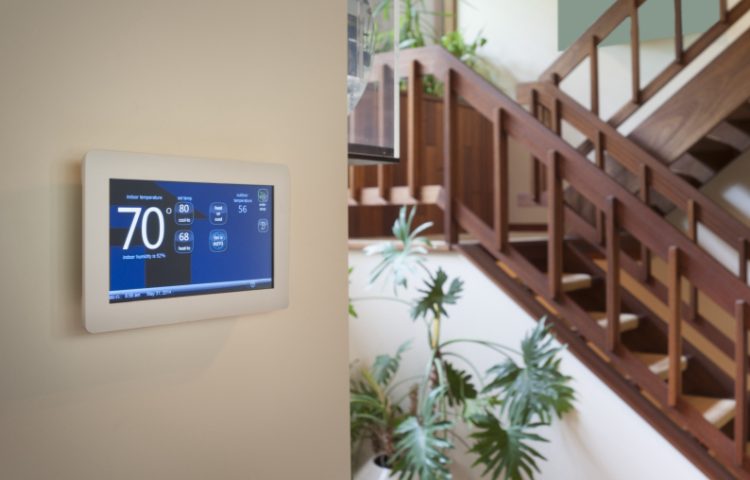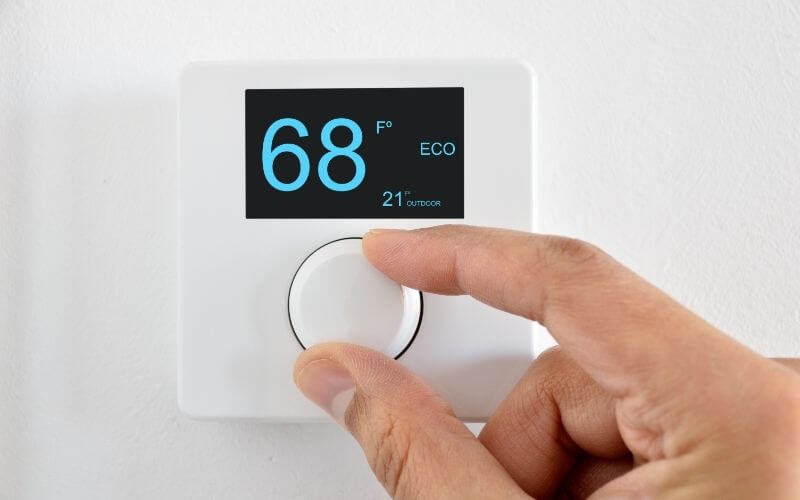What Is The Best Temperature For A House

Determining the best temperature for your house is a balancing act. It's about finding the sweet spot where comfort, energy efficiency, and health all coexist. There's no one-size-fits-all answer, as personal preferences, climate, and even the time of day can influence the ideal temperature. This guide will walk you through the key factors to consider so you can make an informed decision about what's best for your home.
Understanding the Factors That Influence Ideal Temperature
Several elements contribute to your perception of comfort and the overall efficiency of your home's climate control system. Understanding these factors is the first step toward finding your ideal temperature.
Personal Preference
This is perhaps the most significant factor. Some people naturally feel warmer than others. Consider your personal comfort level. Do you prefer to bundle up in a sweater even in moderately warm conditions, or do you tend to feel hot easily? Your inherent tolerance to temperature will play a large role in determining your ideal setting.
Activity Level
Your activity level directly impacts how warm or cool you feel. If you're engaged in physical activity, like exercising or cleaning, your body generates more heat, and you'll likely prefer a cooler environment. Conversely, when you're relaxing or sleeping, your body temperature tends to drop, making a slightly warmer setting more comfortable. Adjust your thermostat based on your typical activity level throughout the day.
Clothing
The clothing you wear significantly affects your perceived temperature. Wearing light, breathable fabrics will keep you cooler, while heavier, insulating materials will help you stay warm. If you tend to wear light clothing indoors, you might prefer a slightly cooler temperature. If you typically wear warmer clothes, you might be comfortable with a slightly higher setting. Consider your usual attire when setting the thermostat.
Time of Day
Energy usage generally peaks during daytime hours when more people are active at home. Lowering the temperature a few degrees during the day (especially when you're away) can significantly reduce energy consumption. At night, when you're sleeping and perhaps using blankets, a slightly cooler temperature is often preferred for better sleep quality. Programmable thermostats are excellent for automating these adjustments.
Health Considerations
Certain medical conditions can make people more sensitive to temperature extremes. For example, individuals with circulatory problems might need a slightly warmer environment. Consult with your doctor if you have any health concerns that might influence your ideal temperature setting. Additionally, maintaining consistent humidity levels can also impact health and comfort.
Recommended Temperature Ranges
While personal preference reigns supreme, there are some generally accepted temperature ranges that offer a good starting point. These ranges balance comfort with energy efficiency.
Recommended Temperature When You're Home
During the day, when you're active at home, a temperature between 72°F and 78°F (22°C and 26°C) is typically recommended. This range offers a good balance between comfort and energy savings. Remember to adjust within this range based on your personal preferences and activity level.
Recommended Temperature When You're Asleep
For optimal sleep, a cooler temperature between 60°F and 67°F (15°C and 19°C) is often recommended. This slightly cooler temperature helps your body's core temperature drop, which is a natural part of the sleep process. If you find this range too cold, adjust it slightly upwards, but aim to keep it below 70°F for better sleep quality.
Recommended Temperature When You're Away
When you're away from home, lowering your thermostat can significantly reduce your energy bills. In the winter, setting the thermostat to around 60°F (15°C) can prevent pipes from freezing without wasting energy. In the summer, raising the thermostat to around 85°F (29°C) can prevent excessive energy use while still protecting your home from extreme heat damage. The key is to find a balance that protects your home and minimizes energy waste.
Energy Efficiency and Cost Savings
One of the most compelling reasons to optimize your home's temperature is energy efficiency. Heating and cooling account for a significant portion of your energy bill, so even small adjustments can add up to substantial savings over time.
The Impact of Thermostat Adjustments
The U.S. Department of Energy estimates that you can save as much as 1% on your energy bill for each degree you adjust your thermostat for eight hours or more per day. This means that by simply lowering the thermostat by 7-10 degrees while you're asleep or away, you could save up to 10% on your heating and cooling costs.
Smart Thermostats and Programmable Options
Investing in a smart thermostat or programmable thermostat is a great way to automate energy savings. These devices allow you to set different temperature schedules for different times of day, ensuring that you're only heating or cooling your home when needed. Smart thermostats can even learn your habits and adjust the temperature automatically to optimize energy efficiency and comfort.
Additional Energy-Saving Tips
- Seal Air Leaks: Caulk and weatherstrip around windows and doors to prevent drafts.
- Insulate Your Home: Proper insulation in your attic, walls, and floors can significantly reduce heat loss in the winter and heat gain in the summer.
- Use Fans: Ceiling fans and portable fans can help circulate air and make you feel cooler, allowing you to set your thermostat a few degrees higher in the summer.
- Maintain Your HVAC System: Regular maintenance, such as changing air filters and cleaning coils, can ensure that your HVAC system is operating efficiently. Think of refrigerant as the 'blood' of your AC system, carrying heat from inside to outside; keeping it healthy maximizes performance.
Troubleshooting Temperature Issues
Sometimes, despite your best efforts, you might still experience temperature inconsistencies or discomfort in your home. Here are some common problems and potential solutions:
Uneven Temperatures in Different Rooms
If some rooms are consistently hotter or colder than others, it could be due to a number of factors, including poor insulation, blocked vents, or ductwork issues. Consider getting a professional HVAC inspection to diagnose and resolve the problem. Duct sealing and balancing can often correct these issues.
HVAC System Running Constantly
If your HVAC system is running constantly without reaching the desired temperature, it could indicate a problem with the system itself, such as a refrigerant leak, a malfunctioning compressor, or a clogged air filter. Call a qualified HVAC technician for repairs. Ignoring this can lead to more costly repairs down the line.
High Humidity
High humidity can make you feel uncomfortable even at moderate temperatures. Consider using a dehumidifier to remove excess moisture from the air. Ensure that your AC system is properly sized for your home, as an oversized unit can cycle on and off too frequently, leading to poor dehumidification.
Drafts
Drafts can make a room feel colder than it actually is. Identify and seal any drafts around windows, doors, and other openings. You can use caulk, weatherstripping, or even plastic sheeting to block drafts.
The Role of Humidity
Temperature is only one aspect of indoor comfort. Humidity, or the amount of moisture in the air, plays a significant role as well.
Ideal Humidity Levels
The ideal humidity level for indoor comfort is between 30% and 50%. When humidity is too high, it can make you feel sticky and uncomfortable, and it can also promote the growth of mold and mildew. When humidity is too low, it can dry out your skin and nasal passages, leading to discomfort and increased susceptibility to illness.
Controlling Humidity
You can control humidity in your home using a variety of methods, including:
- Humidifiers: Add moisture to the air during dry winter months.
- Dehumidifiers: Remove excess moisture from the air during humid summer months.
- Air Conditioners: Help to dehumidify the air as they cool it.
- Ventilation: Properly ventilating your home can help to remove excess moisture and improve air quality.
Conclusion
Finding the best temperature for your house is a personal journey that involves considering your individual preferences, activity level, clothing, and health. By understanding the recommended temperature ranges, taking advantage of energy-saving strategies, and addressing any temperature inconsistencies, you can create a comfortable and energy-efficient home environment. Remember to regularly evaluate your settings and make adjustments as needed to optimize comfort and savings throughout the year. Consistent monitoring and adaptation are key to maintaining an ideal indoor climate.










